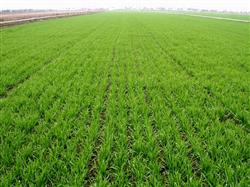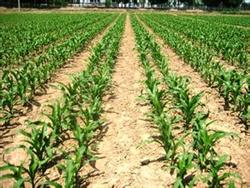How to "spray three precautions" in the later stage of wheat

The late growth stage of wheat is the main period for the occurrence of many kinds of diseases and insect pests, such as wheat aphid, wheat red spider, wheat leaf wasp, rust, powdery mildew, leaf blight, scab and so on. In order to simplify the operation, disease and pest control can be combined with foliar fertilizer, that is, the combined application of fungicides, insecticides and foliar fertilizer can have the effect of "one spray and three prevention" at the same time, such as disease control, insect control, dry hot air and so on. At present, the commonly used foliar fertilizers are 0.2% / 0.3% potassium dihydrogen phosphate solution, 0.2% Tianda 2116 plant cell membrane stabilizer solution and 1% / 0.3% urea solution. Foliar topdressing had better be carried out after 4: 00 p. M. on a sunny day, spray again every 7-10 days, and spray 2-3 times in a row. If you encounter rain within 24 hours after spraying, you should spray it again. To control wheat spiders, 0.9% avermectin EC 3000 times can be used to control wheat trematodes, during the peak period from wheat heading to the early flowering stage of wheat, 50% cypermethrin EC is used to spray 20ml / mu of cypermethrin EC to control the first generation of cotton bollworm; to control wheat aphid, 10% imidacloprid EC is used to spray 10g / mu and control gray planthopper To control sheath blight, 5% Jinggangmycin water can be sprayed at the base of wheat stem with 150 ml / mu of water and 75 kg / mu of water, and then sprayed again at intervals of 10: 15 days; to control powdery mildew and rust, 50% EC can be used to spray 50 ml / mu; to control scab, leaf blight and glume blight, 50% carbendazim wettable powder can be used to spray 75g / mu. The mixed occurrence of the above diseases and pests can be controlled by one-time mixed application of antifungal agents.
- Prev

Disease and pest control of wheat
Wheat spiders [distribution and damage] there are two main species of wheat spiders, the wheat round spider [Penthaleusmajor (duges)] and the wheat long-legged spider [Petrobialatens (Mullen)]. The former belongs to the family Acaridae, the latter belongs to the family Tetranychidae. All wheat areas are distributed across the country, with wheat long-legged spiders in the north and spiders in the south.
- Next

Introduction to planting techniques of Sweet Corn
Autumn corn should be no-tillage and direct seeding after the middle of July. After the previous corn harvest, seize the time to clean the countryside, early sowing is the key, generally does not require deep ploughing. 1. The seeds should be dried for 2 to 3 days, and the seeds should be soaked for 4 to 6 hours before sowing, so that the seedlings can emerge evenly and neatly. Arrange the plant spacing according to the density of 3500 to 4000 seedlings of 667 square meters.
Related
- The first cup of black tea in spring, the flavor and history of tea gardens in Kenya, Africa
- The computer can not only choose potatoes, but also grow tea rice. AI will grow winter oolong tea champion.
- It is not only the inflated tea bitten by insects, but also engraved with the four seasons tea in Beipu.
- The Oriental Beauty Tea Festival in Zhuxian County takes the stage at the weekend to experience the plus-size feast of oil tea.
- & quot; Oriental Beauty Tea & Exploration of Emei in Hsinchu, the hometown of quot;
- The new variety of strawberry "Tainong 1" dessert is the first choice with mellow aroma. Crimson gorgeous
- History of Tea in Taiwan: from Wild Inner Mountain to Export Tea Garden
- Two types of Taiwan Oriental Beauty Black Tea won the British three-Star Award for Childhood Tea Xiang Zhang Jiaqi changed from pilot to champion tea maker.
- Banana species and varieties: the planting history of Taiwan Xianren banana and dwarf banana is long, is banana disease resistant?
- Coffee planting Technology: Qianjie Coffee from Seedling to harvesting

